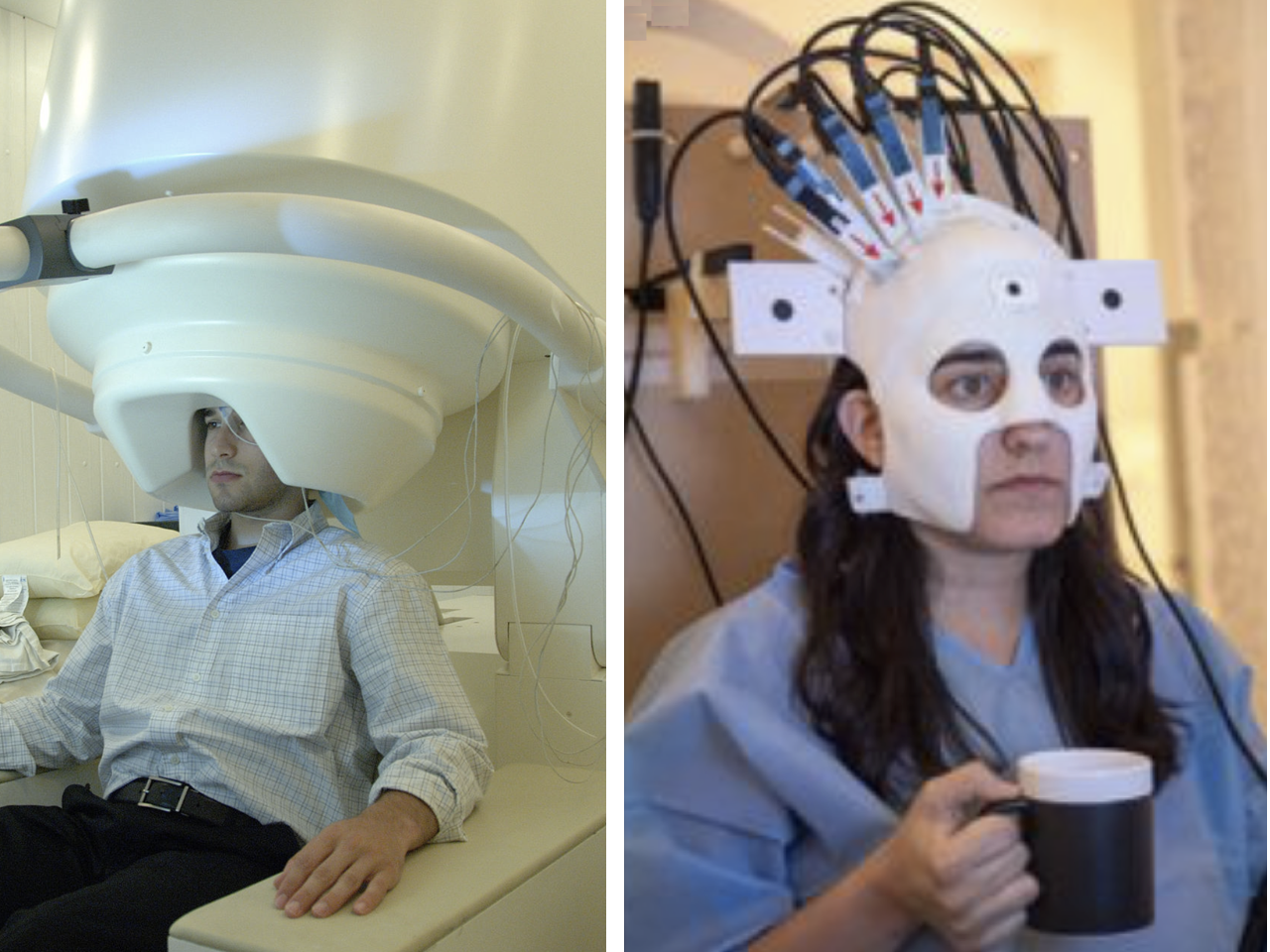New wearable, high-precision brain scanner allows for patients to move around
June 22, 2018

(Left) Current stationary MEG scanner. (Right) New wearable scanner allows patients to move around, even play ping pong. (credit: National Institute of Mental Health and University of Nottingham)
A radical new wearable magnetoencephalography (MEG) brain scanner under development at the University of Nottingham allows a patient to move around, instead of having to sit or lie still inside a massive scanner.
Currently, MEG scanners* weigh around 500 kilograms (about 1100 pounds) because they require bulky superconducting sensors refrigerated in a liquid helium dewar at -269°C. Patients must keep still — even a 5mm movement can ruin images of brain activity. That immobility severely limits the range of brain activities and experiences and makes the scanner unsuitable for children and many patients.
Natural movement, increased sensitivity
The new wearable, compact, non-invasive MEG technology** now makes it possible for patients to move around, which could revolutionize diagnosis and treatment of neurological disorders, say the researchers. Using compact, scalp-mounted sensors, it allows for natural movements in the real world, such as head nodding, stretching, drinking, and even playing ping pong.***
The new design also provides a four times increase in sensitivity in adults and a 15 to 20 times increase in infants, compared to existing MEG systems, according to the researchers. Brain events such as an epileptic seizure could be captured and movement disorders such as Parkinson’s disease could be studied in more precise detail. Now young patients could also have a brain scan, even if they need to fidget.
The new system also supports better targeting, diagnosis, and treatment of mental health and neurological conditions, and wider ranges of social, environmental, and physical conditions.
“In a few more years, we could be imaging brain function while people do, quite literally, anything [using virtual-reality-based environments],” said Matt Brookes, Ph.D., director of the Sir Peter Mansfield Imaging Centre at the University of Nottingham.
The scientists next plan to design a bike-helmet-size scanner, offering more freedom of movement and a generic fit and allowing for the technology to be applied to a wider range of head sizes.
Ref.: Nature. Source: University of Nottingham
* MEG scanners are unique in allowing for precise whole-brain coverage and high resolution in both space and time, compared to EEG and MRI.
** Instead of a superconducting quantum interference device (SQUID), the new system is based on an array of optically pumped magnetometers (OPMs) — magnetic field sensors that rely on the atomic properties of alkali metals.
*** As is the case with current MEG scanners, special walls are required to block the Earth’s magnetic field. That constraints patient movements to a small room.